Related Research Articles

The Church of Sweden is an Evangelical Lutheran national church in Sweden. A former state church, headquartered in Uppsala, with around 5.4 million members at year end 2023, it is the largest Christian denomination in Sweden, the largest Lutheran denomination in Europe and the third-largest in the world, after the Ethiopian Evangelical Church Mekane Yesus and the Evangelical Lutheran Church in Tanzania.

The early Vasa era is a period in Swedish history that lasted between 1523–1611. It began with the reconquest of Stockholm by Gustav Vasa and his men from the Danes in 1523, which was triggered by the event known as the Stockholm Bloodbath in 1520, and then was followed up by Sweden's secession from the Kalmar Union, and continued with the reign of Gustav's sons Eric XIV, John III, John's son Sigismund, and finally Gustav's youngest son Charles IX. The era was followed by a period commonly referred to as the Swedish Empire, or Stormaktstiden in Swedish, which means "Era Of Great Power".

Laurentius PetriNericius was a Swedish clergyman and the first Evangelical Lutheran Archbishop of Sweden. He and his brother Olaus Petri are, together with the King Gustav Vasa, regarded as the main Lutheran reformers of Sweden. They are commemorated by the Evangelical Lutheran Church in America on 19 April.

Olof Persson, sometimes Petersson, better known under the Latin form of his name, Olaus Petri, was a clergyman, writer, judge, and major contributor to the Protestant Reformation in Sweden. His brother, Laurentius Petri, became the first Evangelical Lutheran Archbishop of Sweden.

The Archbishop of Uppsala has been the primate of Sweden in an unbroken succession since 1164, first during the Catholic era, and from the 1530s and onward under the Lutheran church.

Jakob Ulvsson was Archbishop of Uppsala, Primate of the Roman Catholic Church of Sweden 1469–1515 and the founder of Uppsala University in 1477.
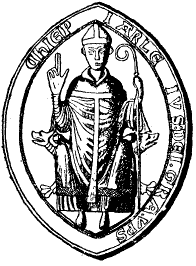
Jarler was a Swedish Dominican friar and Archbishop of Uppsala from 1236 to 1255.
Laurentius Petri Gothus was the second Swedish Lutheran Archbishop of Uppsala, Sweden. He served from 1575 to 1579.
Abraham Andersson, better known by his Latin name, Abrahamus Andreæ Angermannus or simply Abraham Angermannus was the fourth Lutheran Archbishop of Uppsala in the Church of Sweden from 1593 to 1599. He was described as bold and outspoken.

Petrus Kenicius was Archbishop of Uppsala in the Church of Sweden from 1609 to his death.

Laurentius Paulinus Gothus was a Swedish theologian, astronomer and Archbishop of Uppsala.

The Diocese of Strängnäs is a part of the Lutheran Church of Sweden and has its seat in Strängnäs Cathedral in Strängnäs, south of Lake Mälaren. The diocese is made up of the two provinces Närke and Södermanland.
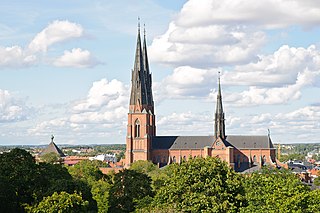
Religion in Sweden has, over the years, become increasingly diverse. Christianity was the religion of virtually all of the Swedish population from the 12th to the early 20th century, but it has rapidly declined throughout the late 20th and early 21st century.
The Uppsala Synod in 1593 was the most important synod of the Lutheran Church of Sweden. Sweden had gone through its Protestant Reformation and broken with Roman Catholicism in the 1520s, but an official confession of faith had never been declared.
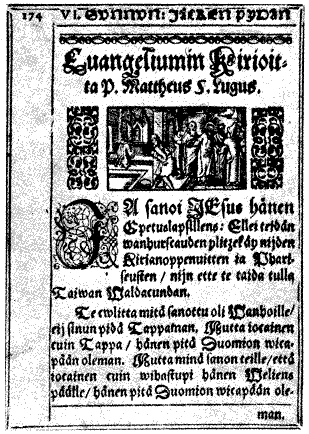
Ericus Erici Sorolainen (1546–1625) was a Finnish Lutheran bishop, a Bishop of Turku from 1583 to 1625 as the successor to Paulus Juusten; and the administrator of the Diocese of Viipuri.
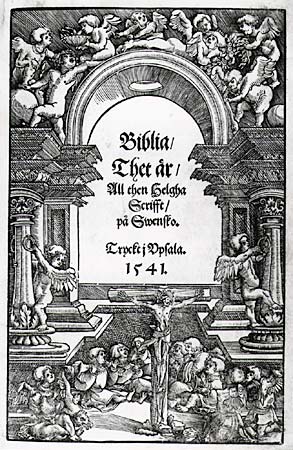
The Reformation in Sweden is generally regarded as having begun in 1527 during the reign of King Gustav I of Sweden, but the process was slow and was not definitively decided until the Uppsala Synod of 1593, in the wake of an attempted counter-reformation during the reign of John III (1568–1592).
Rudbeckii flickskola also called Pigeskolan and Parthenagogium, was the first school for girls in Sweden. It was founded in the city of Västerås by the Bishop of Västerås, Johannes Rudbeckius in 1632.
The Tolerance Act was a Swedish law, enacted by Gustav III of Sweden 24 January 1781. It guaranteed freedom of religion and full citizen rights for all Christian immigrants and foreign residents in Sweden.
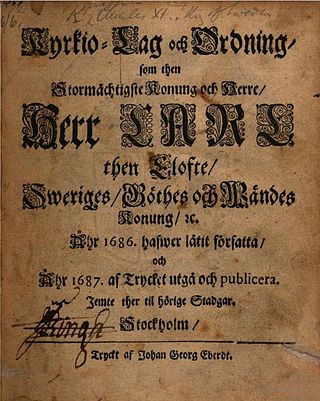
The Swedish Church Law 1686 was a Swedish law which regulated the relationship between the state and the church in Sweden from 1686 until the Swedish Church Law 1992, as well as in Finland until 1870. It replaced the previous Swedish Church Ordinance 1571.
The Liturgical Struggle was the name for the period from 1574 until 1593 in Sweden, when there was a struggle about the confession of faith and liturgy of the Church of Sweden, brought about by the attempts of King John III of Sweden to make the Swedish church take a mediating position between Catholicism and Protestantism by holding only certain doctrines and practices which could be established immediately in either the Word of God or patristic writings, similar to what had once been imposed on the Lutheran areas in Germany during the Augsburg Interim. The struggle began in 1574, when the king introduced some new rules in the liturgy which were not by Lutheran doctrine and practice, followed by his publication of the Liturgia Svecanae Ecclesiae catholicae & orthodoxae conformia commonly called the "Red Book", which re-introduced a number of Catholic customs. The Liturgical Struggle ended with the Lutheran confession of faith at the Uppsala Synod in 1593.
References
- 1 2 Cornelius, p.76
- ↑ Article Förbjudna led , from Nordisk Familjebok
- ↑ Quod superest ex consecratis Elementis, conservetur oportuno loco, donec eis opus fuerit in Ecclesia. -Church ordinance pp. 95-94. Martti Parvio: Canon Ecclesiasticus, p. 94 Helsinki 1966
- ↑ Du Rietz, Anita, Kvinnors entreprenörskap: under 400 år, 1. uppl., Dialogos, Stockholm, 2013
- ↑ Cornelius, p. 77
- (in Swedish) Article Kanonisk rätt , in Nordisk familjebok (1911)
- (in Swedish) Article Kyrkoording , in Nordisk familjebok (1911)
- (in Swedish) Cornelius: Svenska kyrkans historia efter reformationen / Förra delen (1520-1693). (1886–1887)